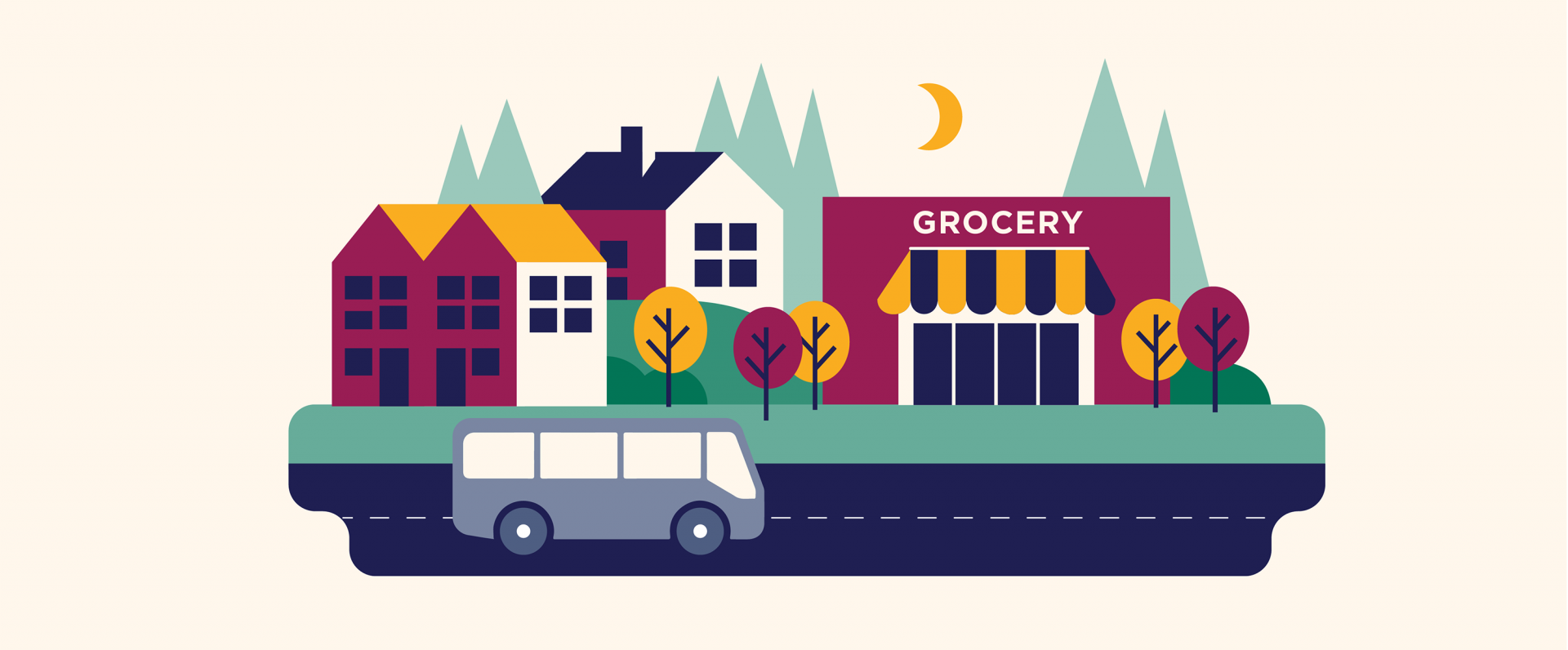
Housing and Food
Safe and affordable housing is a main concern for many people in Oregon. Communities of Black, Indigenous, people of color, and American Indian/Alaska Native people (BIPOC-AI/AN), in particular, face greater housing costs than other communities in Oregon.
There have been centuries of oppression and systemic racism. As a result, there are stark differences between average wealth in white and non-white households. These have contributed to differences in:
- Ability to build generational wealth through owning a home
- Ability to find affordable apartments in safe neighborhoods
- Rates of homelessness
Many households also struggle to afford healthy food. Some families must travel a long distance to get to a grocery store. This is even more so the case in rural areas of the state.
Other families live in neighborhoods with a lot of fast food and convenience stores. But they have few places to buy fresh fruits and veggies. A resilient food system provides enough healthy food to meet current needs.
Our approach:
-
Definition
Active transportation means walking, biking and use of public transportation.
Affordable housing is housing that costs equal to or less than 30% of the total household income. This can mean rent or mortgage payments
-
Why This Matters
Oregon is facing a housing crisis. Half of Oregon households live in housing that is not affordable. Many people are moving to outlying areas. This is because affordable housing options in cities are harder to find. People live healthier lives when they have affordable housing with easy access to bike lanes and sidewalks.
-
How we measure change
Percentage of people who use active transportation to get to work.*
-
Why This Matters
There are stark differences between average wealth in white and non-white households. This is due to centuries of oppression and systemic racism. There has been a major disparity in people who own homes. One way to build wealth for generations to come in communities of color is by increasing homeownership.
There are many programs that help people purchase a home. Some of these programs offer low interest loans or help towards a down payment. We need to promote new and existing programs in communities of color through outreach that is culturally responsive. This way, families will know their options.
-
How we measure change
Homeownership by race/ethnicity.*
-
Definition
Housing First Housing first is an approach that quickly moves people from homelessness into independent and permanent housing and then provides additional supports and services as needed.
-
Why This Matters
For people and families experiencing homelessness, housing programs often have complicated eligibility requirements. These include treatment for mental health or substance use needs.
Housing First is an approach that gets people into housing as quickly as possible with fewer barriers. When a person has a safe and stable home, it is much easier to become stable in other parts of life.
-
How we measure change
Number of people who are homeless.*
-
Definition
Culturally appropriate foods are those that respect the traditions of different cultures.
-
Why This Matters
One in five families in Oregon do not have access to enough healthy, food that they can afford.* Low income neighborhoods are often targeted by fast food or convenience stores. These lack healthy food options. People in rural communities often have to travel a long distance to access fresh foods.
-
How we measure change
Percentage of eligible women who received WIC during pregnancy.**
-
Why This Matters
Community health assessments are conducted by:
- Hospitals
- Coordinated Care Organizations
- Local public health departments
- Tribes
- And more
They often look at food access in their communities. Working together on community health assessments can strengthen partnerships. It can also combine resources to strengthen local food systems.
-
How we measure change
Percentage of health related services spending on food and nutrition services.*
-
Definition
A resilient food system means the ability to adapt to and recover from disruptions and unexpected stresses to continue to produce and provide access to healthy food. Disruptions can include problems related to weather or supply networks.
-
Why this matters
A resilient food system provides enough food to meet current needs. At the same time, it maintains healthy systems that can continue to produce food for people in the future. It also protects people from the negative environmental effects and chemical exposures involved with growing and eating food. These people include:
- Farmers and other food workers
- People eating the food
- Communities living near farms
There are a number of ways to build this system. These include expanding community-supported agriculture, community gardens, and farmers markets. Community-supported agriculture is a food production and distribution system that directly connects farmers and consumers.
-
How we measure change
Food Environment Index.*
